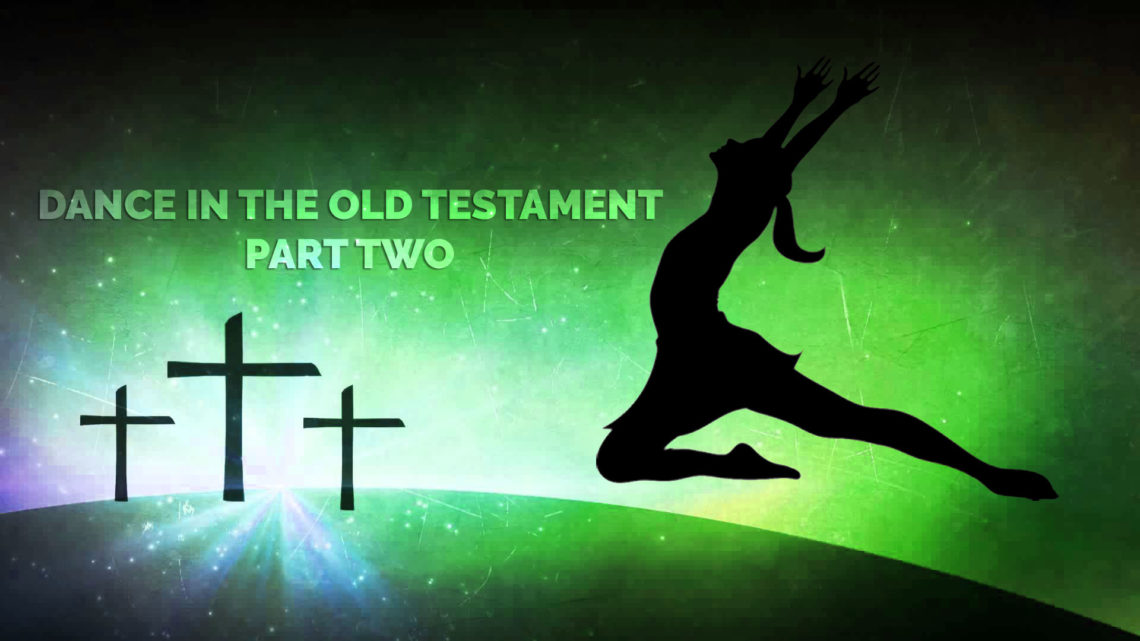As mentioned before, after the Israelites were delivered from Egyptian bondage, they developed various traditions that included times of dancing. Some of these were as described by Debbie Roberts in her book, “Rejoice, A Biblical Study of the Dance”: “…processions, celebratory dance, dance for weddings, funeral dance, the dance of victory, dance for warfare and ritualistic dance. Some of these dances were danced by all the people yet the greeting of the “victor” was done only by the closest relative. That’s why Miriam led the women (Ex. 15:20-21).” (pg. 33)
In the Old Testament, the Israelites were also commanded to observe the three feasts listed previously, which included festive dances. The feast of the Passover was the first that was given, found in Deut. 16:1-8. Apart from the fact that the word “Passover” comes from the Hebrew word “pacach” (Strong’s reference h6452) which means to hop, i.e. (figuratively) skip over or spare; to dance; leap, pass over; the activities during this feast are very significant to the church today. Firstly, the purpose of observing the feast was to remind the Israelites that they were delivered from slavery and bondage “…by strength of hand [by] the Lord…”.This coincides with Paul’s admonition to the Philippians, (and to us) when he wrote, “Wherefore my beloved, as you have always obeyed, not as in my presence only, but now much more in my absence, work out your own salvation with fear and trembling,” (Phil. 2:12). As dance ministers, we must always remember that we are saved by grace and not by any amount of skilful dancing that we can demonstrate; and all the glory therefore should be given to God.
The second aspect about the Passover was that they were to keep it “in a place which the Lord [chose],” not “within any of [the] gates which the Lord [gave them],” (Deut.16:5). This phrase was repeated three times in those eight verses. This emphasizes the fact that God wants us to fully understand that He is in control of our lives (Acts 17:24-28). Even though we may be in a place of possessing our blessings or have achieved a certain level of dance technique or even anointing and recognition as a dance minister, He still calls us to unknown places; new levels of choreography; simply to keep us in that place of total dependence upon Him and constant recognition of His sovereignty in our lives.
Thirdly, the sacrifice was an unblemished lamb which they were to kill and eat, without leaving any of the meat until the next morning. The lamb represented Jesus (John 1:29), Who died for our sins, thereby delivering us from sin and the wages of sin when we choose to believe in His death and resurrection and submit our lives under the blood. In this way, the enemy has to “pass over” us and our families. Eating of the lamb in its entirety signifies that we are to eat the Word, Who is Jesus (John1:1) daily to gain strength for our souls and not hope to depend on our experiences with Him in the past. Aimee Verduzco Kovacs says in her book, “Dancing Into The Anointing” that the Passover is (also) associated with healing as referred to in Ex. 12 and Psa. 105:37. She goes on to say further that as dancers, we must have pure motives and be in a prayerful mood and filled with Holy Spirit so that we “can be used as channels of God to bring healing to the congregation.”
The second national feast was the Feast of Harvest or Pentecost (Deut. 16:9-12, Lev. 23:15-21). According the Nelson Study Bible, “This festival took place fifty days after the barley harvest which started immediately [after] Passover, and involved new grain offerings to the Lord.” Both Aimee Kovacs and Debbie Roberts states that “the main dances of this feast were the procession and the round or circle dance; and support this idea with the scripture Deut. 16:9-11. Both authors give similar descriptions of the festival: “During this feast, the people rejoiced as they thanked God for the plentiful harvest and they offered it unto the Lord. Women and children dancing and playing happily as they worshipped their God. Men marched to the music being piped as they moved closer to their appointed place of offering.” (pg. 53 and pg.71).
[/column]


